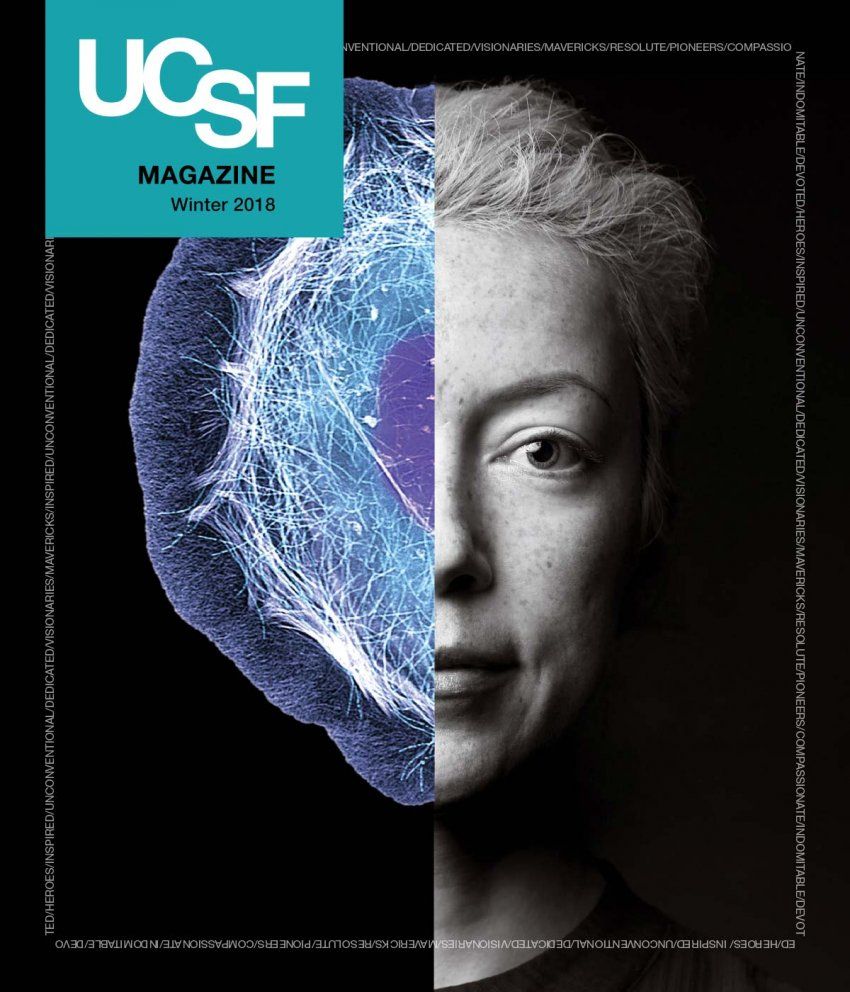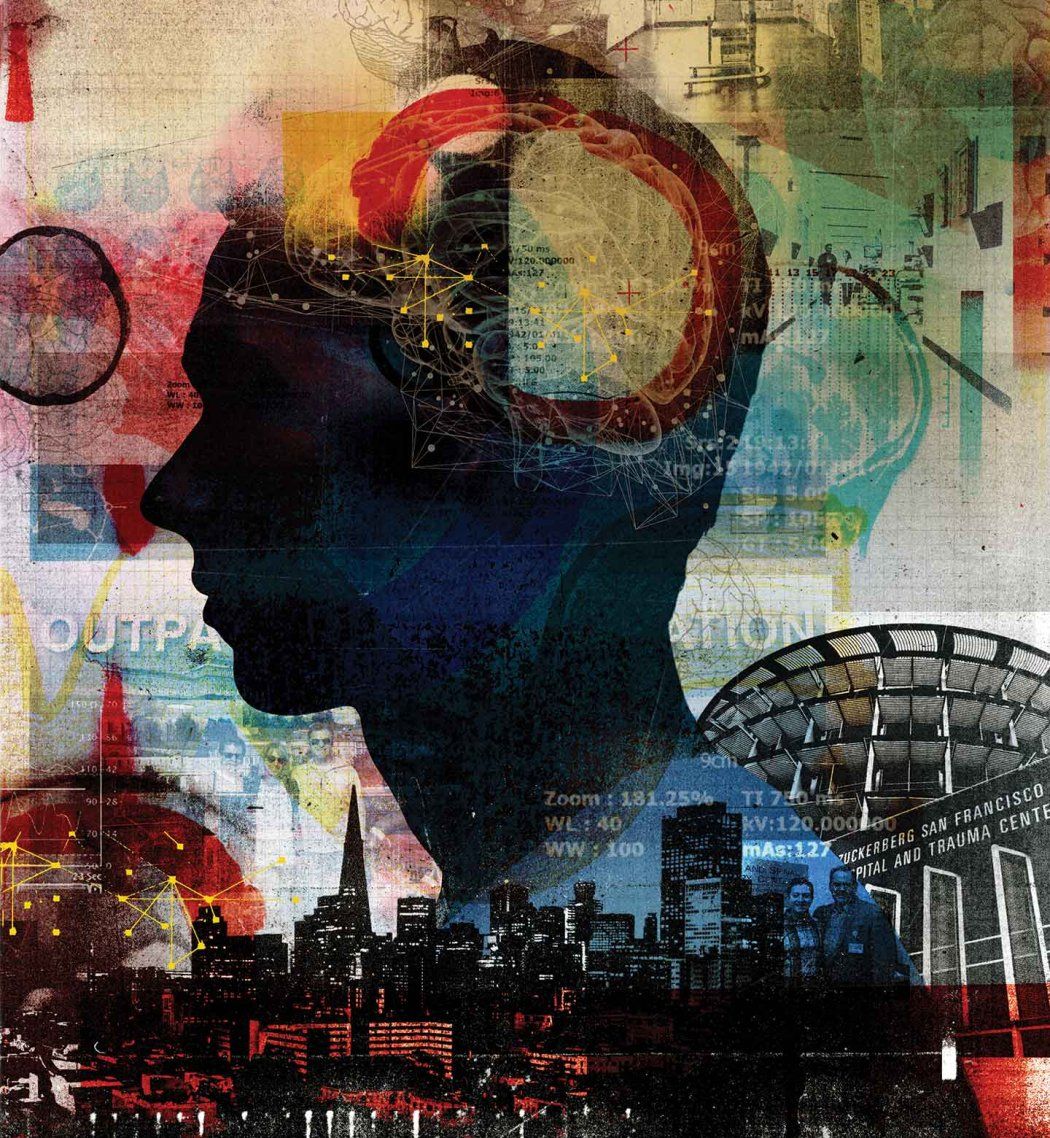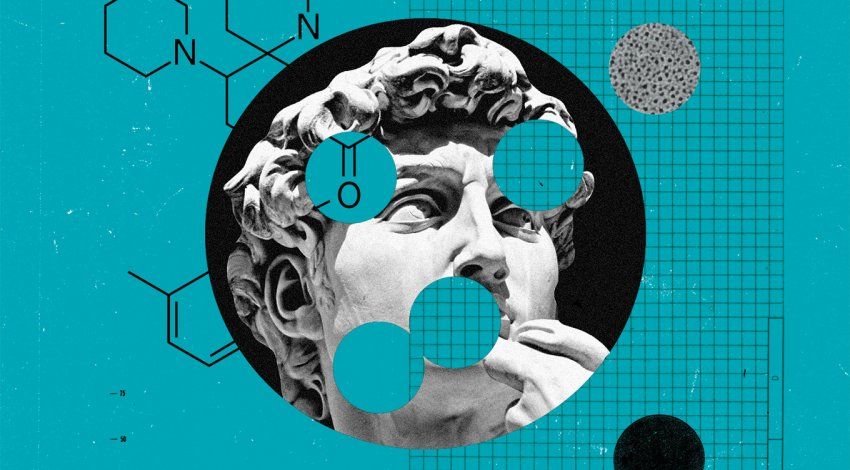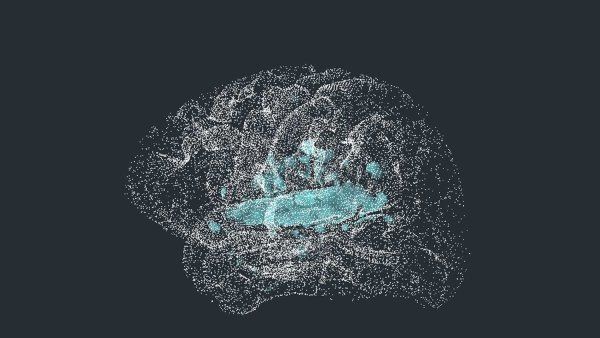
On a clear night in February 2017, Steve McConnell stepped onto a friend’s San Francisco rooftop to admire the city skyline. From his Nob Hill perch, the gregarious 31-year-old attorney might have seen the glimmering lights of the Golden Gate Bridge or the sharp angles of the Transamerica Pyramid. He might have reveled in the sense of perspective bestowed by his bird’s-eye view.
He likely felt content: he was on track to make partner at a law firm; he’d just bought his first home, a condo outside of Los Angeles; and he was spending time with friends in a city he loved, a favorite pastime for the travel buff.
But Steve can’t tell us what he felt that day. Because in a setting that should have inspired awe, something tragic happened. A step into an unprotected rooftop shaft sent him plummeting down a narrow opening, stripping him of his memories and – for a time – of any ability to walk, speak, and engage with the world.
The 40-foot fall left Steve trapped in a three-by-three space with fractures of his hips, ribs, and neck; damage to his kidneys, spleen, and lungs; and a severe traumatic brain injury (TBI). “No one knew where the shaft went,” his father, Tim McConnell, remembers. “The urban search and rescue team finally got to him through a tiny hole in his friend’s first-floor apartment. That gave him a shot at survival.” (The family’s names have been changed.)
While Steve was wheeled, unconscious, into the Zuckerberg San Francisco General (ZSFG) emergency room, his parents and his sister were asleep in Southern California. They didn’t yet know that Steve had become a devastating statistic – one of an estimated 2.8 million people treated in the U.S. each year for traumatic brain injury, a class of diseases about which frustratingly little is known.
Nevertheless, the McConnells feel fortunate Steve landed at ZSFG that day. The hospital, the only adult Level I trauma center in the Bay Area, is home to UCSF neurosurgeon Geoffrey Manley, MD, PhD, a leader in the study of TBI and head of the most robust TBI research initiative in the world, TRACK-TBI. “We wouldn’t be having this conversation if not for ZSFG and Dr. Manley,” Tim says.
2.8 million
Number of TBI-related ER visits, hospitalizations and deaths in 2013
The McConnell family met Manley a few days into Steve’s ICU stay. At the time, Steve was in an induced coma and on life support. “We pressed for specific answers about Steve’s potential for recovery, and there just weren’t answers,” Tim remembers. “But we were so grateful for Dr. Manley, who held our hands, stayed with us for close to an hour, and encouraged us to keep trying to communicate with our son.”
The force of the fall had badly injured Steve’s brain, rupturing blood vessels and causing extensive bruising. Damage to his nerve fibers had left Steve in a state of minimal consciousness, and his brain had begun to swell, putting potentially deadly pressure on his brain tissue. Doctors alleviated the swelling by draining excess cerebrospinal fluid, but the injury “was just terrible,” Tim says.
The extent of the damage Steve had suffered was unusually severe, but its scope – broken vessels, torn nerve fibers, and bruised tissue – was textbook, insofar as any TBI can claim that designation. That’s because no patient experiences a traumatic brain injury in exactly the same way. It’s a category of diseases even more complex, some TBI scientists say, than cancer.
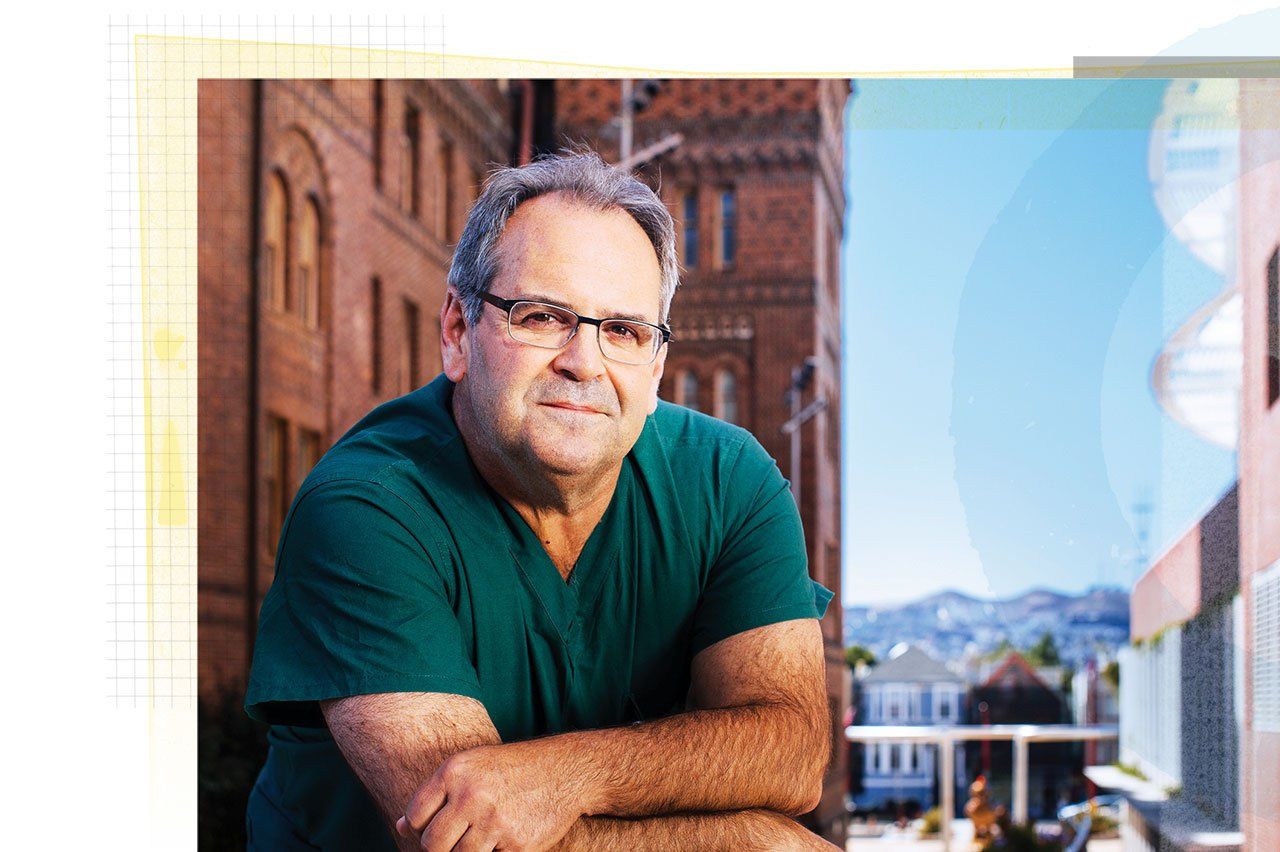
Geoff Manley is a leader in the study of traumatic brain injury. It’s a field that has for decades been in the dark ages – but Manley believes TBI scientists are now on “the threshold of changing the way the disease is addressed at every level.” Photo: Elena Zhukova
Just a decade ago, Manley, a member of the UCSF Weill Institute for Neurosciences, and his team would have been unable to see, with such precision, how the fall had impacted Steve’s brain. But eight years of TRACK-TBI work involving more than 3,000 patients across the injury spectrum has taught them what tools give the most complete picture of traumatic brain injury. That is crucial information for patients like Steve when it’s time to make decisions about treatments and when questions arise about long-term outcomes.
With a combination of imaging techniques, including structural MRI, diffusion tensor imaging (DTI), and functional MRI, Manley could see in microscopic detail the damage to Steve’s brain tissue, blood vessels, and neural highways. He could also make some predictions about how Steve might fare long-term, based on patterns emerging from the TRACK-TBI patient database. Even 10 years ago, this would have been impossible.
Today, the CT scan is still the only FDA-approved diagnostic for TBI, but it’s a tool that was unable to uncover the injury at the root of Steve’s inability to wake up. His structural and functional MRIs held those answers, revealing multiple tiny hemorrhages associated with Steve’s nerve damage and demonstrating disruptions in his normal brain connectivity.
Together, these data points would have hinted at challenges ahead, even if Steve’s injury had been far milder. Regardless of how a TBI is categorized – mild, moderate, or severe – patients who exhibit these markers tend to struggle cognitively, experience disability, and/or suffer from other significant post-injury symptoms.
But even with the dynamic picture generated by these results, Manley couldn’t answer many of the McConnells’ early questions. That’s because, Manley says, “we still don’t know enough about TBI to know with any certainty how an individual patient will recover. I’m humbled daily by how much we have left to learn.” TBI, he says, as a field, is still far behind cardiology and oncology.
Manley has been racing to bring the discipline up to speed since the beginning of his career. “When I started as a neurosurgery resident in 1995, I saw that this was an area that affects millions of people every year, and no one really knew much of anything,” he explains. “I’m not exaggerating when I say we were treating patients with techniques developed a hundred years ago.” Change, he realized, was long overdue. Manley decided to shift his focus from brain tumors – where research was far more advanced – to TBI.
He chipped away at the problem for close to 15 years, recruiting patients into small-scale studies at ZSFG and bringing on outstanding physicians and scientists dedicated to the subject. A grant to apply at three additional centers the imaging techniques his team was already using at ZSFG planted the seeds of what is now known as TRACK-TBI.
“We think of it as an essential, foundational study for traumatic brain injury, just as the Framingham study was for heart disease,” says Manley’s close colleague Pratik Mukherjee, MD, PHD, a neuroradiologist and a co-leader of TRACK-TBI.
“It’s not enough to evaluate a treatment for TBI on a group of young, college-educated people without other medical issues,” Mukherjee explains. “That’s a small fraction of TBI patients; you have to show that any treatment strategy works in the whole population.” That’s why the initiative has centers in cities like Pittsburgh, Miami, and Houston and enrolls patients of all ages, ethnicities, and socioeconomic backgrounds.
With his parents’ consent, Steve became part of the landmark study soon after he was admitted to ZSFG. “We knew it was a decision he would support,” Tim says. Every TBI patient in the 18 participating hospitals is offered the same opportunity.
According to Manley and Mukherjee, the absence of a foundational study is partly responsible for the fact that there’s still no drug effective against TBI. “There have been close to a hundred TBI clinical trials of drugs and other interventions,” Mukherjee says. “They’ve all failed because the hypotheses were not based on good enough data.”
For Steve, that meant there was no way doctors could treat his primary traumatic brain injury. They could only draw excess cerebrospinal fluid from his brain to help prevent further injury. And at Manley’s suggestion, the family supplied constant stimulation. “We played music from his phone,” Tim says. “We talked to him and we held his hand, engaging him in that sweet spot just below agitation.”
The McConnell family met Manley a few days into Steve’s ICU stay. At the time, Steve was in an induced coma and on life support. “We pressed for specific answers about Steve’s potential for recovery, and there just weren’t answers,” Tim remembers. “But we were so grateful for Dr. Manley, who held our hands, stayed with us for close to an hour, and encouraged us to keep trying to communicate with our son.”
The force of the fall had badly injured Steve’s brain, rupturing blood vessels and causing extensive bruising. Damage to his nerve fibers had left Steve in a state of minimal consciousness, and his brain had begun to swell, putting potentially deadly pressure on his brain tissue. Doctors alleviated the swelling by draining excess cerebrospinal fluid, but the injury “was just terrible,” Tim says.
The extent of the damage Steve had suffered was unusually severe, but its scope – broken vessels, torn nerve fibers, and bruised tissue – was textbook, insofar as any TBI can claim that designation. That’s because no patient experiences a traumatic brain injury in exactly the same way. It’s a category of diseases even more complex, some TBI scientists say, than cancer.
40%
Percentage of people who visit an ER after a TBI but are never seen by a doctor

Geoff Manley, MD, PhD, is a leader in the study of traumatic brain injury. It’s a field that has for decades been in the dark ages – but Manley believes TBI scientists are now on “the threshold of changing the way the disease is addressed at every level.” Photo: Elena Zhukova
Just a decade ago, Manley, a member of the UCSF Weill Institute for Neurosciences, and his team would have been unable to see, with such precision, how the fall had impacted Steve’s brain. But eight years of TRACK-TBI work involving more than 3,000 patients across the injury spectrum has taught them what tools give the most complete picture of traumatic brain injury. That is crucial information for patients like Steve when it’s time to make decisions about treatments and when questions arise about long-term outcomes.
With a combination of imaging techniques, including structural MRI, diffusion tensor imaging (DTI), and functional MRI, Manley could see in microscopic detail the damage to Steve’s brain tissue, blood vessels, and neural highways. He could also make some predictions about how Steve might fare long-term, based on patterns emerging from the TRACK-TBI patient database. Even 10 years ago, this would have been impossible.
Today, the CT scan is still the only FDA-approved diagnostic for TBI, but it’s a tool that was unable to uncover the injury at the root of Steve’s inability to wake up. His structural and functional MRIs held those answers, revealing multiple tiny hemorrhages associated with Steve’s nerve damage and demonstrating disruptions in his normal brain connectivity.
Together, these data points would have hinted at challenges ahead, even if Steve’s injury had been far milder. Regardless of how a TBI is categorized – mild, moderate, or severe – patients who exhibit these markers tend to struggle cognitively, experience disability, and/or suffer from other significant post-injury symptoms.
But even with the dynamic picture generated by these results, Manley couldn’t answer many of the McConnells’ early questions. That’s because, Manley says, “we still don’t know enough about TBI to know with any certainty how an individual patient will recover. I’m humbled daily by how much we have left to learn.” TBI, he says, as a field, is still far behind cardiology and oncology.
Manley has been racing to bring the discipline up to speed since the beginning of his career. “When I started as a neurosurgery resident in 1995, I saw that this was an area that affects millions of people every year, and no one really knew much of anything,” he explains. “I’m not exaggerating when I say we were treating patients with techniques developed a hundred years ago.” Change, he realized, was long overdue. Manley decided to shift his focus from brain tumors – where research was far more advanced – to TBI.
He chipped away at the problem for close to 15 years, recruiting patients into small-scale studies at ZSFG and bringing on outstanding physicians and scientists dedicated to the subject. A grant to apply at three additional centers the imaging techniques his team was already using at ZSFG planted the seeds of what is now known as TRACK-TBI.
“We think of it as an essential, foundational study for traumatic brain injury, just as the Framingham study was for heart disease,” says Manley’s close colleague Pratik Mukherjee, MD, PHD, a neuroradiologist and a co-leader of TRACK-TBI.
“It’s not enough to evaluate a treatment for TBI on a group of young, college-educated people without other medical issues,” Mukherjee explains. “That’s a small fraction of TBI patients; you have to show that any treatment strategy works in the whole population.” That’s why the initiative has centers in cities like Pittsburgh, Miami, and Houston and enrolls patients of all ages, ethnicities, and socioeconomic backgrounds.
With his parents’ consent, Steve became part of the landmark study soon after he was admitted to ZSFG. “We knew it was a decision he would support,” Tim says. Every TBI patient in the 18 participating hospitals is offered the same opportunity.
According to Manley and Mukherjee, the absence of a foundational study is partly responsible for the fact that there’s still no drug effective against TBI. “There have been close to a hundred TBI clinical trials of drugs and other interventions,” Mukherjee says. “They’ve all failed because the hypotheses were not based on good enough data.”
For Steve, that meant there was no way doctors could treat his primary traumatic brain injury. They could only draw excess cerebrospinal fluid from his brain to help prevent further injury. And at Manley’s suggestion, the family supplied constant stimulation. “We played music from his phone,” Tim says. “We talked to him and we held his hand, engaging him in that sweet spot just below agitation.”
Experimental Drug Reverses Memory Failure Caused by TBI
By Pete Farley
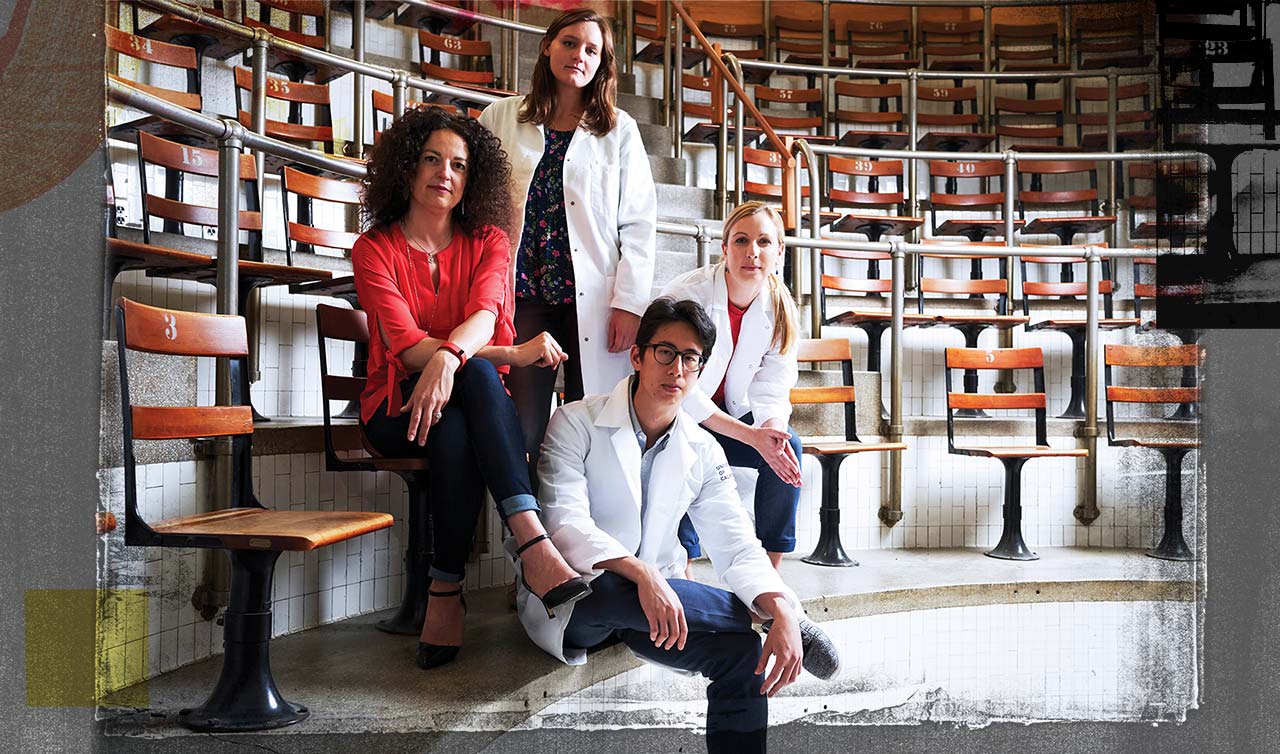
With the discovery that an experimental drug had completely reversed learning and memory impairments caused by TBI in mice, Susanna Rosi (left) and her team of postdocs opened up a promising new avenue for treating TBI in humans. Photo: Steve Babuljak
In July 2017, UCSF scientists reported that an experimental drug had completely reversed severe learning and memory impairments caused by TBI in mice. The drug, known as ISRIB, fully restored the ability of the brain-injured mice to learn and remember, even when the animals’ first treatment was as much as a month after the injury.
Most research on brain injury has suggested that treatments must be initiated as quickly as possible to preserve normal function, making the latter aspect of the results particularly striking.
The study offers a promising new avenue for treating TBI in humans. “We need to do much more research,” says Susanna Rosi, PhD, whose team led the study. “But I have high hopes that this drug can bring back lost memory capacity to our patients who have suffered brain injuries.”
ISRIB was discovered in 2013 in the lab of Peter Walter, PhD, a UCSF professor of biochemistry and biophysics and winner of the 2018 Breakthrough Prize in Life Sciences.
“These results are extraordinarily exciting,” says Walter. “We think that ISRIB may uncover an untapped reservoir in the brain that allows damaged memory circuits to be repaired.”
The drug was licensed in 2015 to Calico, a company working to understand the biology that controls human life span.
Scientists in Rosi’s lab tested ISRIB – which had previously been shown by Walter’s team to enhance memory in normal mice – in mice with two different types of brain injury, both of them known to degrade learning and memory in humans. The goal was to see if the drug could also improve the mice’s ability to learn and form memories.
“In general, animals with these injuries never learn well again,” says Rosi, who is director of neurocognitive research in UCSF’s Brain and Spinal Injury Center. “So it’s remarkable that ISRIB could restore the ability to form new memories even when we delayed giving the drug for four weeks after the injury. This has not been considered possible.”
As Steve gradually grew more alert in the weeks following his injury, he began intensive physical therapy, speech therapy, and occupational therapy. “He would eat soup with a fork. He couldn’t tell us who the president was,” Tim remembers. “And if you asked him where he was, the answer was everything from Santa Cruz to Israel.”
After six weeks, Steve was finally able to leave ZSFG, but he was far from ready to return to normal life. “Dr. Manley was traveling, but he was on the phone with me and lobbying with providers to get Steve into the best inpatient rehab,” Tim says. “He said, ‘I want you to be closer to your home so you can sleep in your bed at night.’ But we wanted to stay close to Dr. Manley and ZSFG.”
After an exhaustive search, the family secured an inpatient spot at a San Francisco-based rehab facility. When Tim and his wife weren’t sleeping in a rented apartment, they were at the center with Steve. “After five weeks, the insurance ran out and they told us we had to leave,” Tim says. “It wasn’t nearly enough time.”
Steve moved on to a rehab facility closer to home, where he received outpatient treatment just three days a week, for less than three hours a day. It was all that Steve’s insurance would cover. On the off days, “we did yoga with him, we’d go to the gym, we’d try to make it fun,” Tim says.
Despite their best efforts, the makeshift regimen was inadequate. Four months after his injury, Steve’s progress stalled. “He became somewhat apathetic,” Tim says. “He just wasn’t challenged.”
Yet initially, Steve’s naturally sunny disposition remained intact. That was a surprise to the McConnells, who knew that those who experience TBI – even a concussion or other “mild injury – often suffer depression, anxiety, and/or irritability. It was only later that Steve exhibited these symptoms.
The McConnells knew Steve needed more intensive therapy and more tailored support. With Manley’s encouragement, they found him a spot at a top-tier rehab center in Southern California. They sacrificed to provide the additional therapy, which even Steve’s comparatively “good” insurance would not cover. (Manley has lobbied for better TBI rehab options. “TRACK-TBI is collecting crucial health economic data to support the need for more services for TBI patients and reduce disability from TBI,” he says, noting that the economic burden of the disease is an estimated $76 billion per year.)
There, with all-day regimens of speech therapy, physical therapy, and occupational therapy, Steve made progress. By August 2017, he began testing the professional waters with some basic legal work from home one day a week. It was part therapy, part work. “A partner at the firm would delegate work for him, then he’d review it and give feedback to Steve’s speech therapist,” Tim explains.
Eight months after his fall, Steve moved back into the condo he had purchased just before the accident. Quickly, it became apparent that the move was premature. Today, “he rarely spends the night alone, and we help him with grocery shopping, bills, and transportation,” Tim says. It’s likely that Steve will soon move back home.
His work at the law firm might also be ending. Even Steve, who has lacked self-awareness since the injury, sees the writing on the wall. He can no longer recite legal statutes or think quickly on his feet. The McConnell family is now helping Steve to reimagine his future outside the law. “What you do becomes your identity,” Tim says.
“We need to help him find a new purpose in life.”
Tim hopes that, with renewed motivation and the support of a psychologist, the family can help Steve stave off the depression and sadness that he has begun. “We thought we’d gotten past the worst part, but now we’re as afraid as we’ve ever been,” he says. “Depression could destroy all the progress we’ve made.”
Despite the ambiguity and upheaval, Tim says, “we have nothing but gratitude for where we are today and for the support we’ve received.” Manley, he says, deserves a huge amount of credit for Steve’s progress thus far. “His miracles are just as valuable outside the operating room,” Tim reflects, referring to the emotional support Manley provided his family.
Soon, the McConnells and millions of other families impacted by TBI might gain more clarity about what lies ahead and more support for their journey after an injury. “We now have the statistical tools, the imaging tools, and the blood biospecimen tools to understand traumatic brain injury so much better,” Manley says. “We’re sitting on the world’s largest collection of advanced imaging data for TBI patients – and we might have the largest clinical neuroscience data set that has ever been amassed.”
In the coming years, Manley and his team will work to mine that data to answer fundamental questions about TBI and to ensure that every patient gets the best possible care. With objective biomarkers and the ability to predict how a patient will do after injury, they should be able to diagnose traumatic brain injury more quickly and precisely, make smart recommendations about short- and long-term care, conduct better drug trials, and push for adequate insurance money to be allocated for rehabilitation.
“I think we’re on the threshold of changing the way this disease is addressed at every level,” Manley says. “We can and will create a new normal for patients after a traumatic brain injury.”
As Steve gradually grew more alert in the weeks following his injury, he began intensive physical therapy, speech therapy, and occupational therapy. “He would eat soup with a fork. He couldn’t tell us who the president was,” Tim remembers. “And if you asked him where he was, the answer was everything from Santa Cruz to Israel.”
After six weeks, Steve was finally able to leave ZSFG, but he was far from ready to return to normal life. “Dr. Manley was traveling, but he was on the phone with me and lobbying with providers to get Steve into the best inpatient rehab,” Tim says. “He said, ‘I want you to be closer to your home so you can sleep in your bed at night.’ But we wanted to stay close to Dr. Manley and ZSFG.”
2%
Percentage of the U.S. population living with long-term physical, cognitive, and psychological TBI-related disabilities
After an exhaustive search, the family secured an inpatient spot at a San Francisco-based rehab facility. When Tim and his wife weren’t sleeping in a rented apartment, they were at the center with Steve. “After five weeks, the insurance ran out and they told us we had to leave,” Tim says. “It wasn’t nearly enough time.”
Steve moved on to a rehab facility closer to home, where he received outpatient treatment just three days a week, for less than three hours a day. It was all that Steve’s insurance would cover. On the off days, “we did yoga with him, we’d go to the gym, we’d try to make it fun,” Tim says.
Despite their best efforts, the makeshift regimen was inadequate. Four months after his injury, Steve’s progress stalled. “He became somewhat apathetic,” Tim says. “He just wasn’t challenged.”
Yet initially, Steve’s naturally sunny disposition remained intact. That was a surprise to the McConnells, who knew that those who experience TBI – even a concussion or other “mild injury – often suffer depression, anxiety, and/or irritability. It was only later that Steve exhibited these symptoms.
The McConnells knew Steve needed more intensive therapy and more tailored support. With Manley’s encouragement, they found him a spot at a top-tier rehab center in Southern California. They sacrificed to provide the additional therapy, which even Steve’s comparatively “good” insurance would not cover. (Manley has lobbied for better TBI rehab options. “TRACK-TBI is collecting crucial health economic data to support the need for more services for TBI patients and reduce disability from TBI,” he says, noting that the economic burden of the disease is an estimated $76 billion per year.)
Zero
Number of successful clinical trials or treatments for TBI
There, with all-day regimens of speech therapy, physical therapy, and occupational therapy, Steve made progress. By August 2017, he began testing the professional waters with some basic legal work from home one day a week. It was part therapy, part work. “A partner at the firm would delegate work for him, then he’d review it and give feedback to Steve’s speech therapist,” Tim explains.
Eight months after his fall, Steve moved back into the condo he had purchased just before the accident. Quickly, it became apparent that the move was premature. Today, “he rarely spends the night alone, and we help him with grocery shopping, bills, and transportation,” Tim says. It’s likely that Steve will soon move back home.
His work at the law firm might also be ending. Even Steve, who has lacked self-awareness since the injury, sees the writing on the wall. He can no longer recite legal statutes or think quickly on his feet. The McConnell family is now helping Steve to reimagine his future outside the law. “What you do becomes your identity,” Tim says.
“We need to help him find a new purpose in life.”
Tim hopes that, with renewed motivation and the support of a psychologist, the family can help Steve stave off the depression and sadness that he has begun. “We thought we’d gotten past the worst part, but now we’re as afraid as we’ve ever been,” he says. “Depression could destroy all the progress we’ve made.”
$76 Billion
Estimated annual direct and indirect costs from TBI
Despite the ambiguity and upheaval, Tim says, “we have nothing but gratitude for where we are today and for the support we’ve received.” Manley, he says, deserves a huge amount of credit for Steve’s progress thus far. “His miracles are just as valuable outside the operating room,” Tim reflects, referring to the emotional support Manley provided his family.
Soon, the McConnells and millions of other families impacted by TBI might gain more clarity about what lies ahead and more support for their journey after an injury. “We now have the statistical tools, the imaging tools, and the blood biospecimen tools to understand traumatic brain injury so much better,” Manley says. “We’re sitting on the world’s largest collection of advanced imaging data for TBI patients – and we might have the largest clinical neuroscience data set that has ever been amassed.”
In the coming years, Manley and his team will work to mine that data to answer fundamental questions about TBI and to ensure that every patient gets the best possible care. With objective biomarkers and the ability to predict how a patient will do after injury, they should be able to diagnose traumatic brain injury more quickly and precisely, make smart recommendations about short- and long-term care, conduct better drug trials, and push for adequate insurance money to be allocated for rehabilitation.
“I think we’re on the threshold of changing the way this disease is addressed at every level,” Manley says. “We can and will create a new normal for patients after a traumatic brain injury.”
